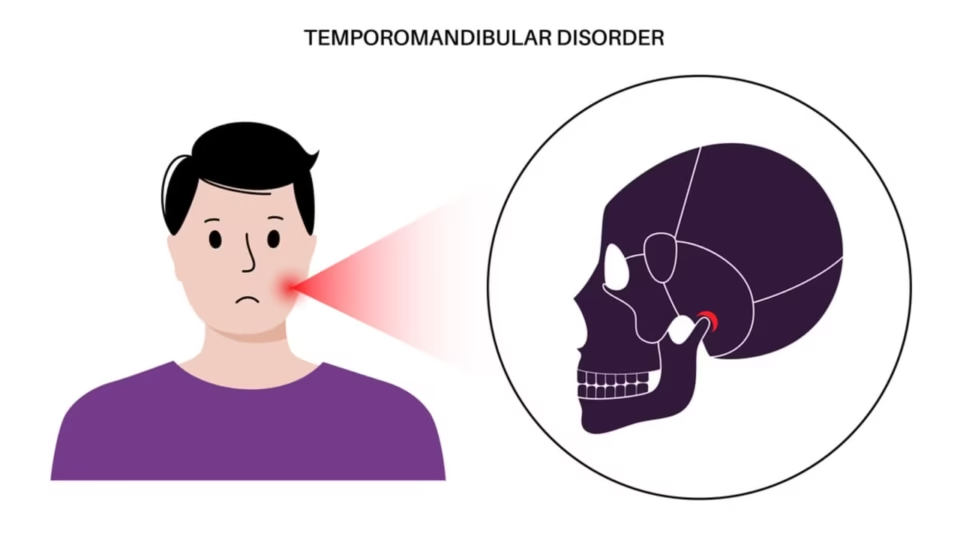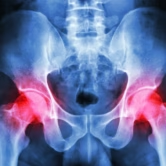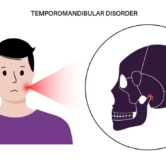
Physiotherapy for TMJ, or temporomandibular joint disorder, offers a comprehensive approach to managing discomfort and improving jaw function. This condition, affecting the joint that connects the jaw to the skull, can lead to pain, clicking, restricted movement, and other symptoms that disrupt daily life. Physiotherapy aims to alleviate these issues through targeted exercises and interventions. In this blog, we will explore what TMJ is, how physiotherapy can address TMJ pain, the role of eating habits, and the potential for permanent relief. We will also delve into effective exercises and lifestyle changes that support TMJ management, offering a holistic view of this therapeutic approach.
What Is TMJ?
TMJ, or temporomandibular joint disorder, refers to a set of conditions affecting the jaw joint and surrounding muscles. It can cause pain, clicking, stiffness, and difficulty in jaw movement, leading to challenges in speaking, chewing, and even breathing in severe cases. The temporomandibular joint acts as a sliding hinge, connecting the jawbone to the skull, and any disruption in its function can significantly impact daily activities.
Factors contributing to TMJ include misalignment of the teeth or jaw, stress-induced clenching, disc displacement, trauma, prolonged mouth opening during dental procedure or surgery and arthritis. Symptoms often manifest as jaw pain, clicking or popping sounds during movement, and headaches. Understanding TMJ requires recognizing the intricate balance of muscles, ligaments, disc and bones that facilitate jaw function. Effective management involves assessing these contributing factors and implementing strategies to reduce pain and improve mobility. Physiotherapy plays a crucial role in this process by offering targeted exercises and techniques to enhance joint function and alleviate discomfort.
In summary, TMJ encompasses a variety of conditions affecting the jaw joint, characterized by pain and movement issues. Understanding its causes and symptoms is essential for effective management, with physiotherapy offering significant benefits in addressing these challenges.
How Does Physiotherapy Treat TMJ Pain?
Physiotherapy treats TMJ pain by employing a range of techniques aimed at improving joint function, reducing pain, and enhancing overall jaw mobility. These techniques include manual therapy, exercises, laser and education on posture and ergonomics. By focusing on these areas, physiotherapy can offer significant relief and improve quality of life.
- Manual Therapy: This involves hands-on techniques that target the muscles and joints around the jaw to relieve tension and improve movement.
- Jaw Exercises: Specific exercises are designed to strengthen the jaw muscles, enhance flexibility, and promote proper jaw function.
- Posture Education: Poor posture can exacerbate TMJ symptoms. Physiotherapists educate individuals on maintaining proper head and neck alignment to reduce strain on the jaw.
- Stress Management: Stress often leads to jaw clenching and grinding. Physiotherapy can include relaxation techniques to minimize these habits.
- Laser Therapy: A non-invasive technique in physiotherapy for TMJ that reduces inflammation, relieves pain, and promotes faster healing, especially in chronic cases.
- Heat and Cold Therapy (at-home management): Applying heat or cold packs can reduce inflammation and alleviate pain in the affected area.
- Trigger Point Therapy: Identifying and releasing trigger points in the jaw and neck muscles can offer significant pain relief.
- Ergonomic Advice: Guidance on optimizing workspaces and daily routines can prevent unnecessary strain on the jaw.
To sum up, physiotherapy offers a multifaceted approach to treating TMJ pain, combining manual techniques, exercises, and education to manage symptoms effectively and improve jaw function.
How Do Eating Habits Affect TMJ?
Eating habits significantly affect TMJ, as certain foods and eating behaviours can exacerbate symptoms. Soft diets, avoiding hard foods, and being mindful of chewing can help reduce jaw strain and discomfort. Paying attention to these aspects of diet can play a crucial role in managing TMJ.
| Soft Foods | Consuming soft foods minimizes jaw strain and can help alleviate pain associated with chewing. |
| Avoid Chewy Foods | Chewing gum or sticky candies can overwork the jaw muscles, leading to increased discomfort. |
| Cut Food into Small Pieces | Smaller bites require less forceful chewing, which can reduce stress on the jaw joint. |
| Chew Evenly | Ensure you chew food evenly on both sides of the mouth to distribute the workload equally across the jaw. |
| Stay Hydrated | Proper hydration keeps the joints lubricated, reducing friction and pain. |
| Limit Caffeine and Alcohol | These substances can increase muscle tension and exacerbate TMJ symptoms. |
| Mindful Eating | Eating slowly and deliberately can prevent unnecessary jaw strain and improve digestion. |
| Avoid Clenching During Meals | Being aware of and avoiding jaw clenching can help reduce tension. |
In short, modifying eating habits by choosing soft foods, avoiding excessive chewing, and practicing mindful eating can effectively support TMJ management and reduce symptoms.
Can TMJ Be Cured Permanently?
TMJ cannot always be permanently resolved, but its symptoms can often be managed effectively through a combination of treatments and lifestyle adjustments. While some individuals may experience long-term relief, others might require ongoing management to keep symptoms at bay. Understanding the root causes of TMJ, such as stress or dysfunction, and addressing them through therapies like physiotherapy can lead to significant improvement. Treatments often focus on reducing pain, improving function, and preventing future episodes. Physiotherapy, stress management techniques, and sometimes dental interventions can all contribute to managing TMJ symptoms. Although a permanent resolution is not guaranteed, many people find considerable relief and improved quality of life through consistent management strategies.
Bottom line, while a permanent cure for TMJ may not be possible for everyone, effective management through physiotherapy and other interventions can lead to significant symptom reduction and improved jaw function.
What Physiotherapy Exercises Are Best For TMJ Relief?
Physiotherapy exercises for TMJ relief focus on improving jaw strength, flexibility, and alignment. These exercises include jaw stretches, resistance exercises, and relaxation techniques. By incorporating these into daily routines, individuals can alleviate TMJ pain and improve joint function.
| Jaw Relaxation | Place the tongue at the roof of the mouth and relax the jaw muscles. This helps relieve tension and promotes relaxation. |
| Jaw Side-to-Side Movement | Gently move the jaw from side to side to enhance flexibility and coordination. |
| Chin Tucks | Tuck the chin towards the neck while keeping the head straight. This exercise helps improve posture and reduce strain on the jaw. |
| Controlled Jaw Opening | Open the mouth slowly while keeping the tongue in contact with the roof. This controlled movement helps strengthen the jaw. |
| Neck Stretches | Stretching the neck muscles can reduce tension in the jaw area and support overall posture. |
| Tongue Up Exercise | Keep the tongue on the roof of the mouth while opening and closing the mouth. This exercise promotes proper jaw function. |
Note: Always perform TMJ exercises gently and within a comfortable range of motion. If any movement causes sharp or worsening pain, stop immediately and consult your physiotherapist before continuing.
Overall, incorporating these physiotherapy exercises can enhance jaw strength and flexibility, offering significant relief from TMJ symptoms and improving overall function.
How Long Does It Take For Physiotherapy To Work For TMJ?
The time frame for physiotherapy to work for TMJ varies depending on the severity and underlying causes of the condition. On average, individuals may begin to notice improvements within a few weeks of consistent therapy. Factors like adherence to exercises, lifestyle changes, and the specific techniques used by the physiotherapist can all influence the recovery timeline. Some people experience quicker relief, while others might require several months of therapy to achieve optimal results. The personalized nature of physiotherapy means that treatment plans are tailored to individual needs, which can significantly impact the effectiveness and duration of the therapy. Regular assessments and adjustments to the treatment plan are crucial to ensure continued progress and symptom relief.
In summary, the effectiveness of physiotherapy for TMJ is influenced by various factors, with many individuals seeing improvements within weeks, although full benefits may take several months.
What Lifestyle Changes Support Physiotherapy For TMJ?
Lifestyle changes play a vital role in supporting physiotherapy for TMJ by reducing stress on the jaw and promoting overall health. These changes include stress reduction techniques, posture improvements, and dietary adjustments, all of which can contribute to managing TMJ symptoms more effectively.
| Stress Reduction | Practices like yoga and meditation can help reduce jaw clenching and grinding caused by stress. |
| Posture Correction | Maintaining good posture, especially during work or screen time, minimizes unnecessary strain on the jaw. |
| Regular Exercise | Engaging in regular physical activity promotes overall health and can reduce tension in the jaw muscles. |
| Sleep Positioning | Sleeping on the back with proper pillow support can prevent jaw strain during the night. |
| Avoiding Chewing Gum | Reducing habits that involve excessive jaw movement can significantly decrease TMJ symptoms. |
| Mindfulness Practices | Being mindful of jaw tension during the day can help identify and break habits that exacerbate TMJ. |
| Proper Hydration | Drinking enough water supports joint lubrication and reduces friction in the jaw. |
| Heat Application | Applying warm compresses can relax the jaw muscles and alleviate discomfort. |
In brief, integrating lifestyle changes such as stress management, posture correction, and dietary adjustments can enhance the effectiveness of physiotherapy for TMJ, leading to improved outcomes.
Jaw Pain No More!
Physiotherapy offers a valuable approach to managing TMJ, addressing both the symptoms and underlying causes of jaw discomfort. By incorporating targeted exercises, lifestyle changes, and stress management techniques, individuals can experience significant relief and improved jaw function.
For those seeking personalized support, BeActive Physio in Oakville provides professional guidance and tailored treatment plans to help manage TMJ effectively. If you are experiencing TMJ-related discomfort, contact us today to explore how our services can enhance your well-being and quality of life.
Frequently Asked Questions
What Are the Signs of TMJ?
TMJ is typically identified by jaw pain, clicking or popping sounds when moving the jaw, headaches, and difficulty chewing. Other signs may include ear pain, facial pain, and limited mouth opening.
Can Physiotherapy Help With TMJ?
Yes, physiotherapy can help manage TMJ symptoms by improving joint function, reducing pain, and enhancing jaw mobility through exercises and manual therapy.
How Often Should I Do TMJ Exercises?
TMJ exercises are generally recommended to be done daily, with specific guidance from a physiotherapist to ensure proper technique and effectiveness.
Is TMJ Related to Stress?
Yes, stress can contribute to TMJ by causing jaw clenching and grinding, which increases tension in the jaw muscles. Managing stress can reduce TMJ symptoms.
What Foods Should Be Avoided With TMJ?
Individuals with TMJ should avoid hard, chewy, or sticky foods that require excessive jaw movement. Opting for softer foods can help reduce stress on the jaw.




